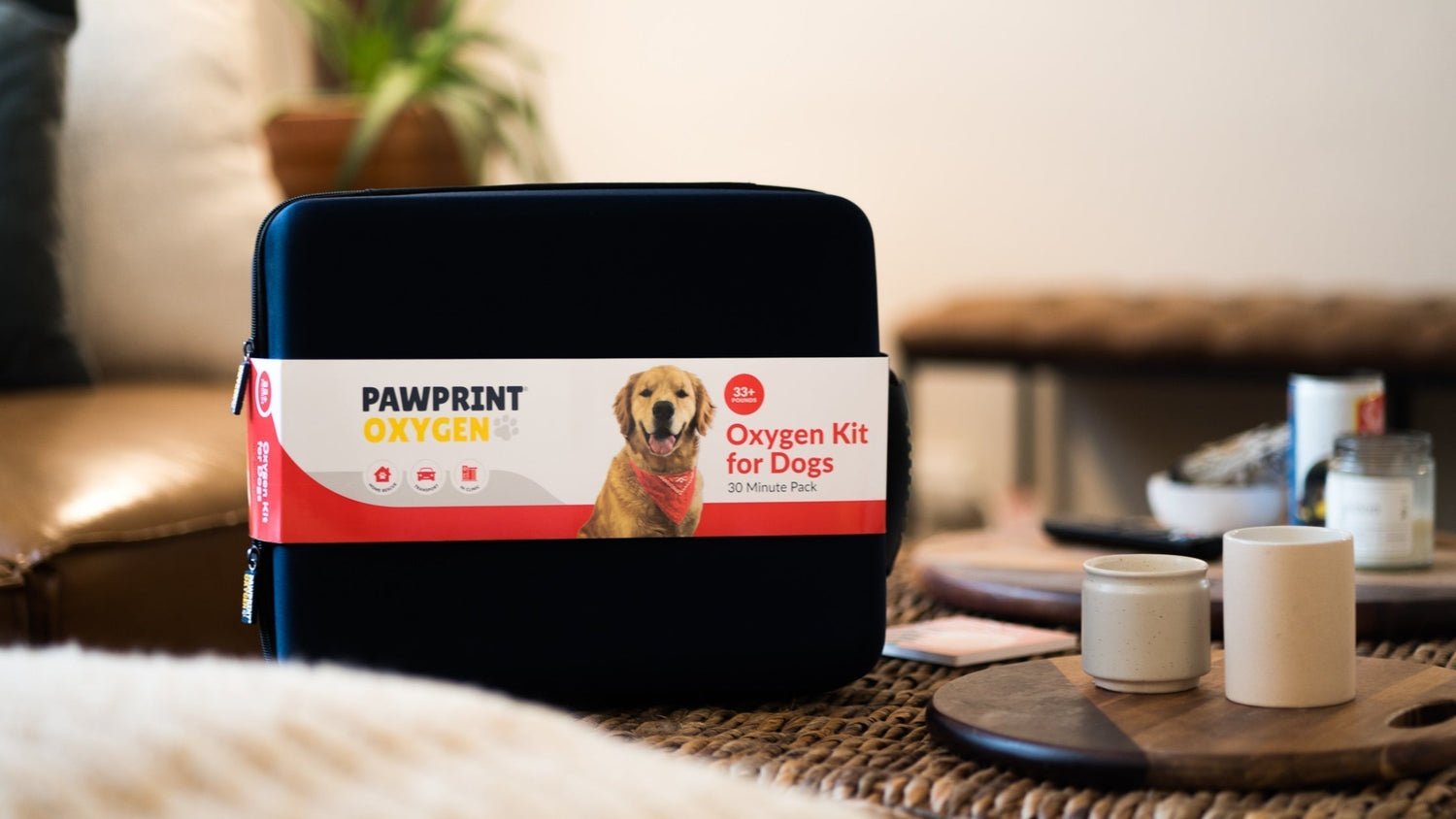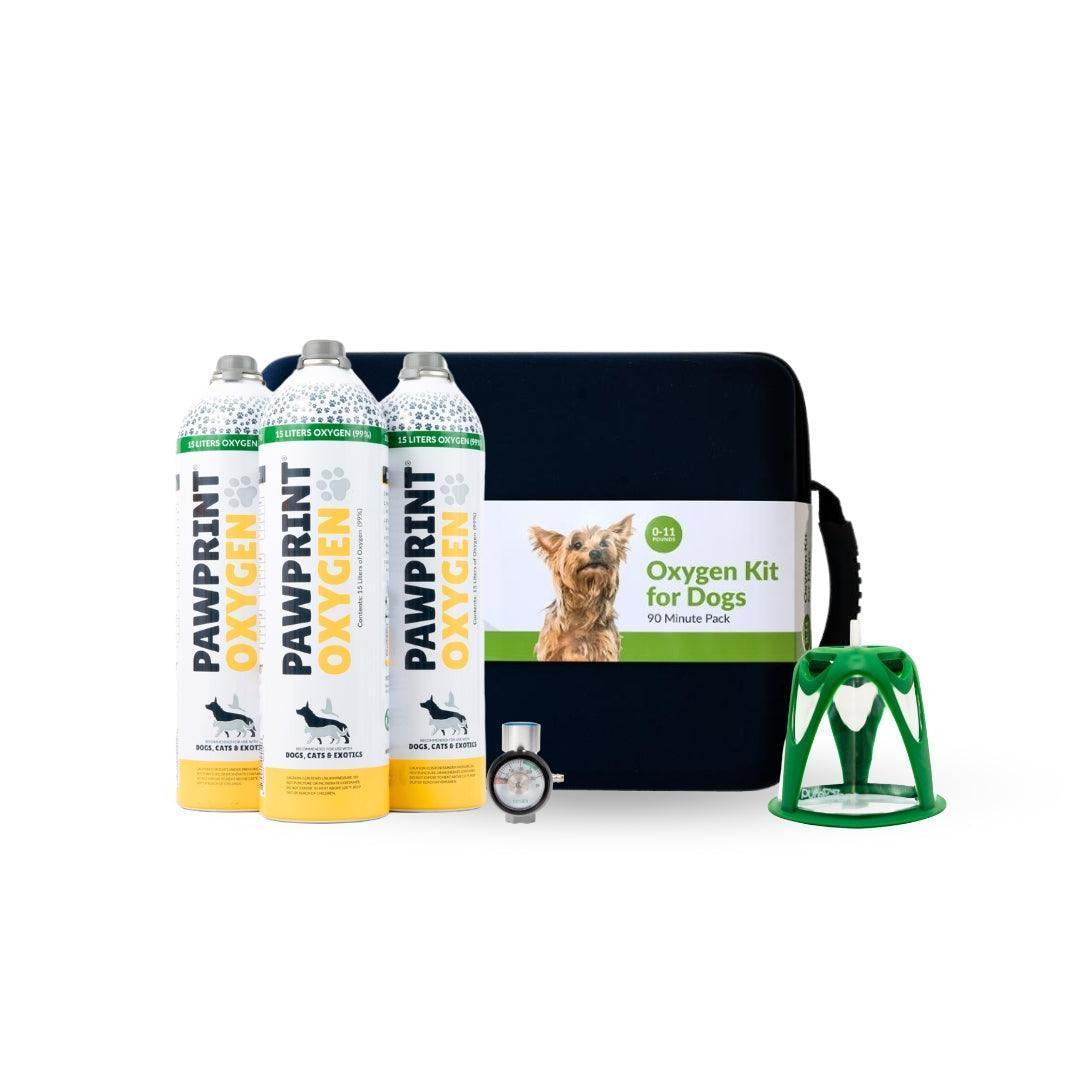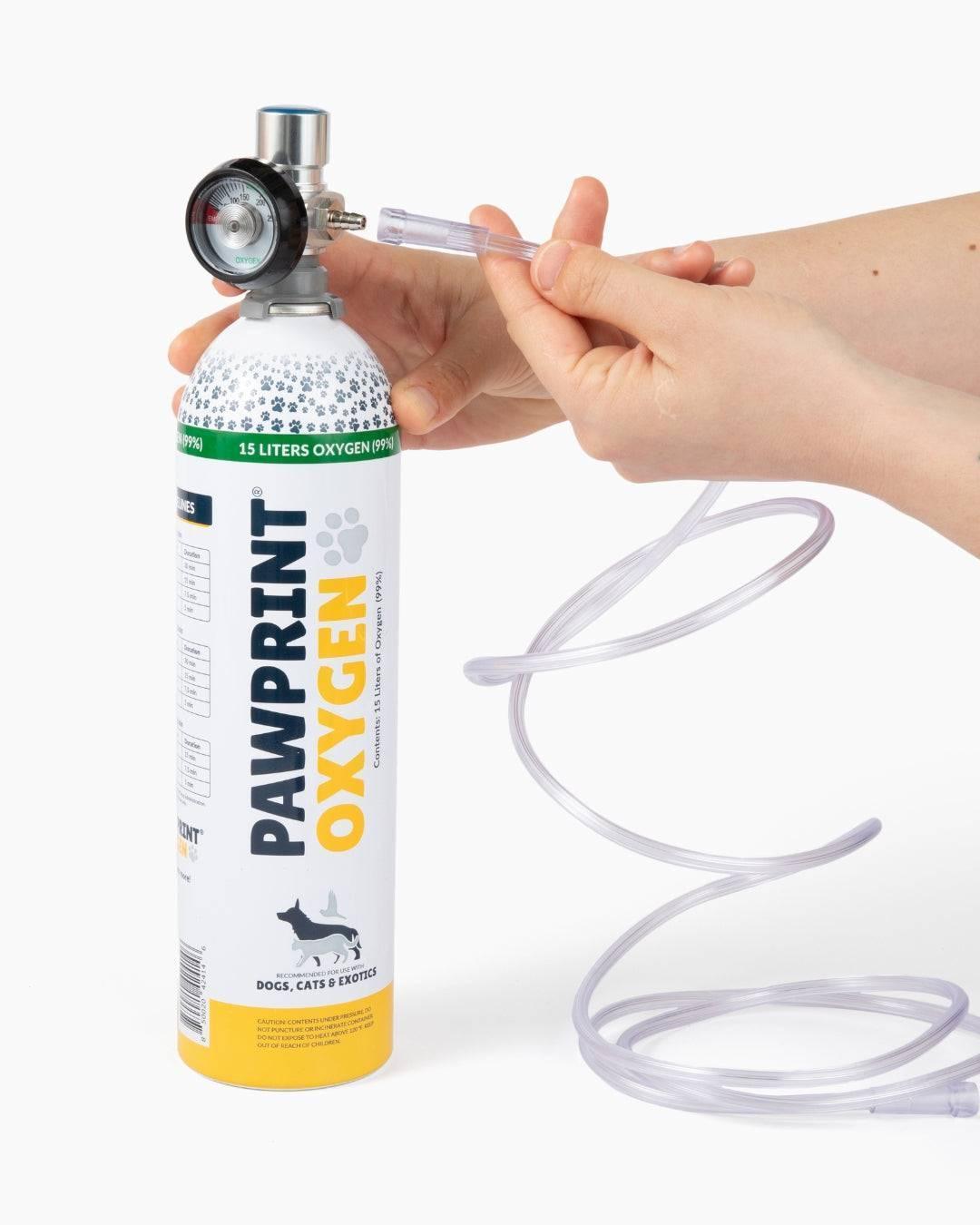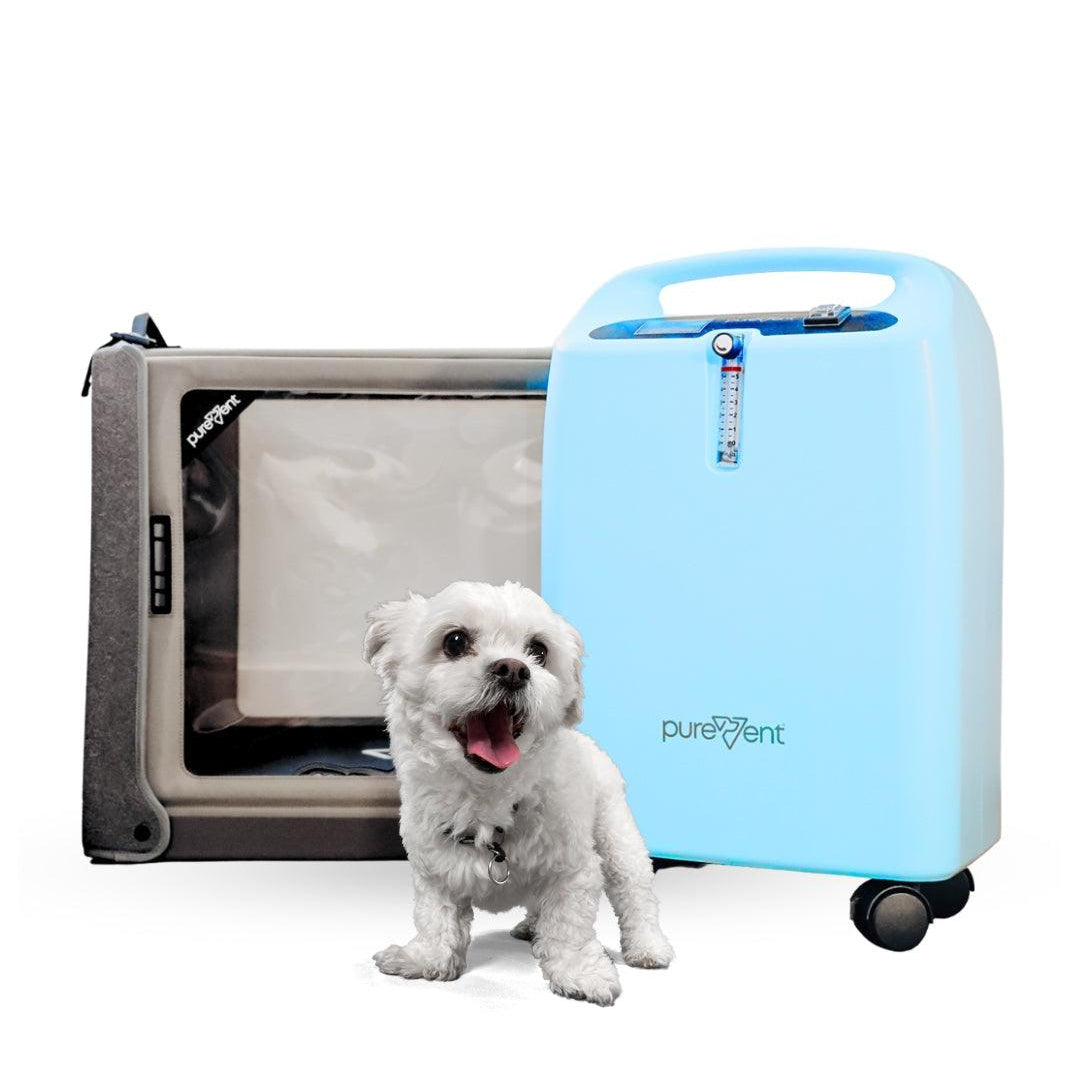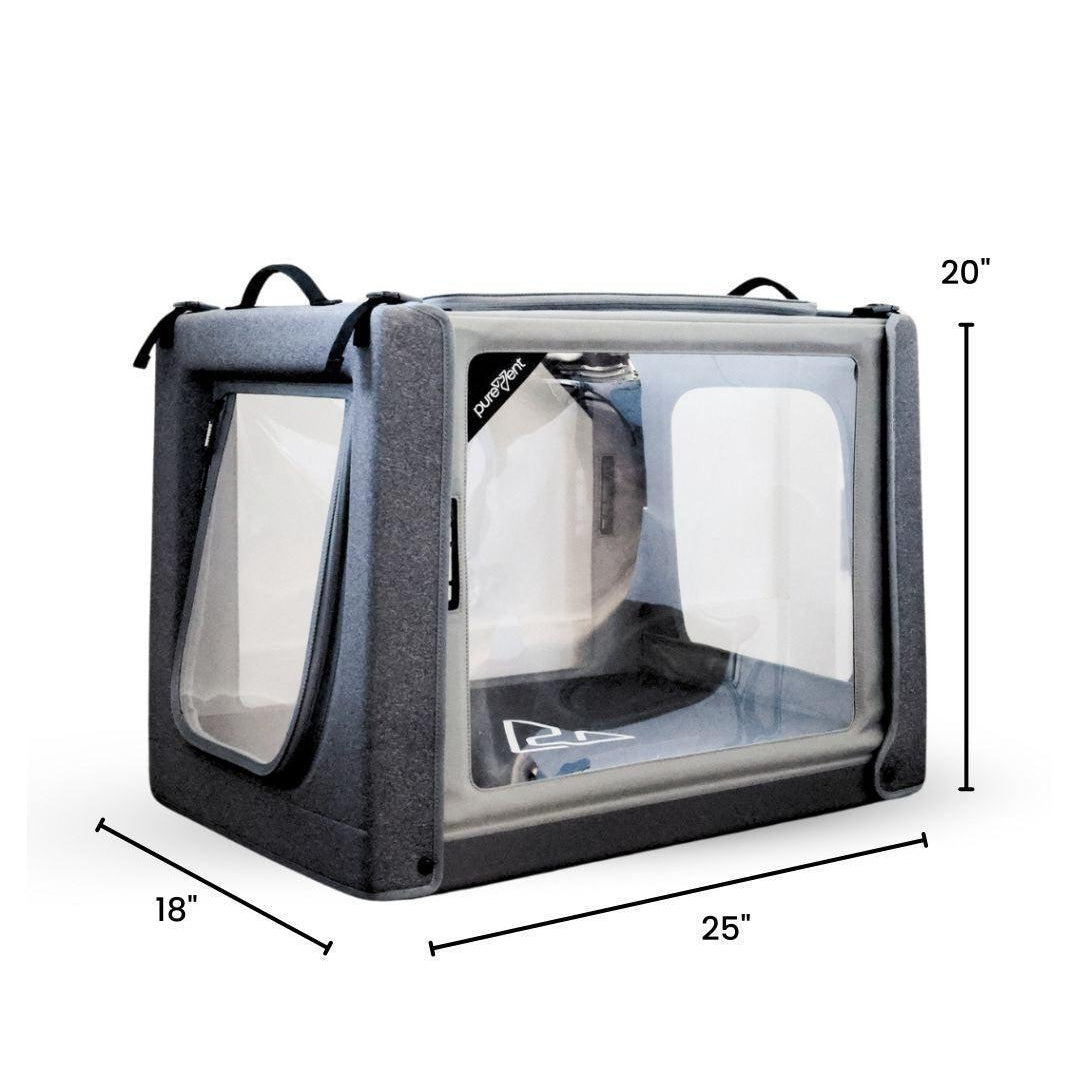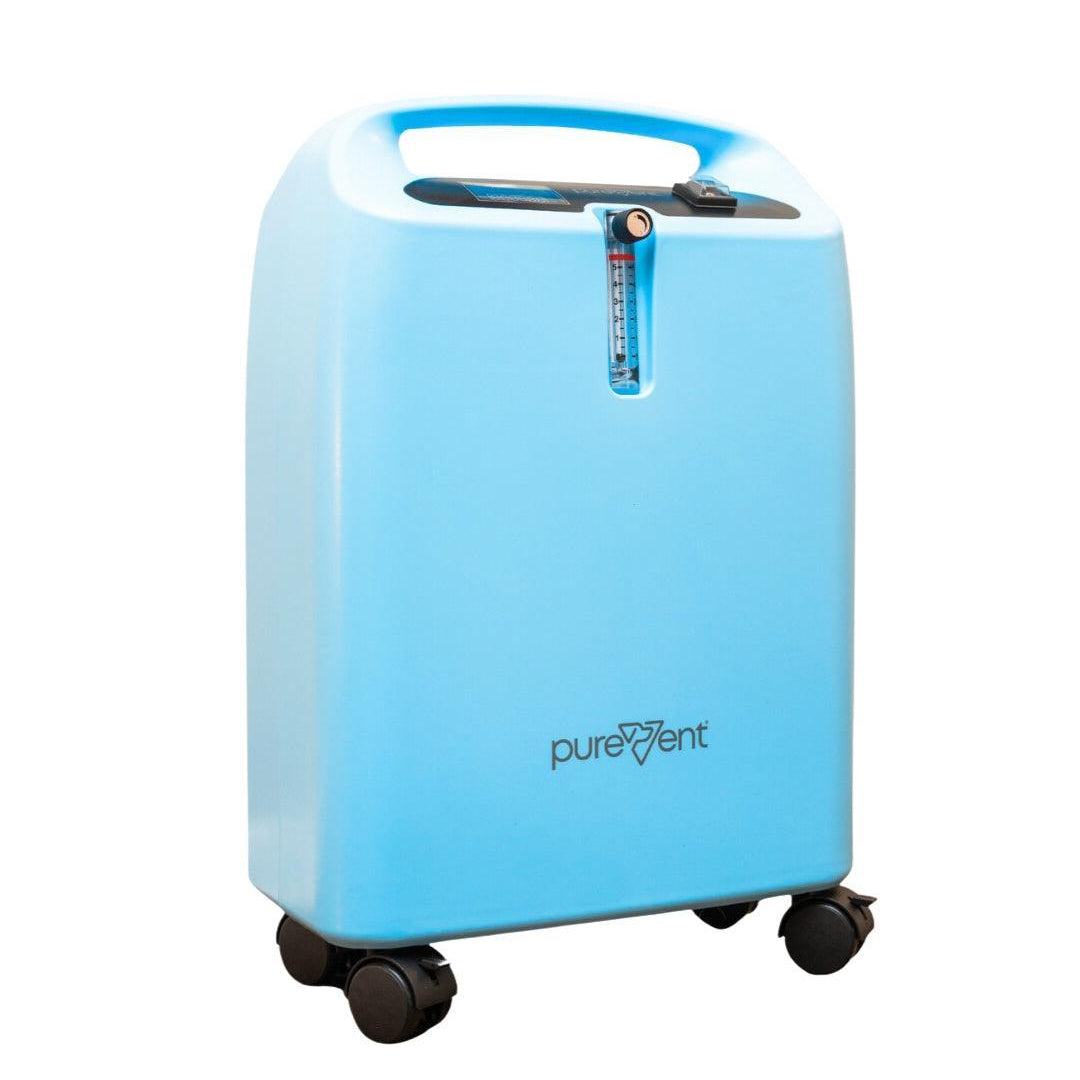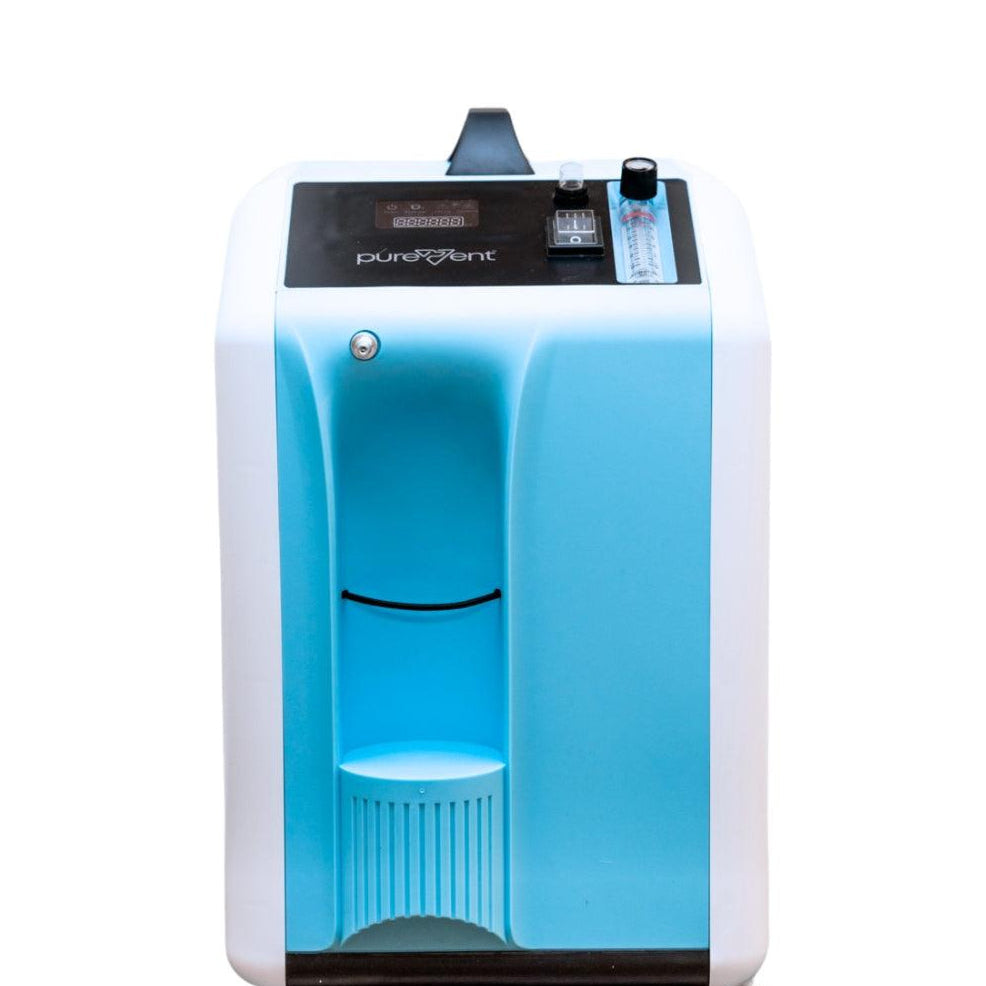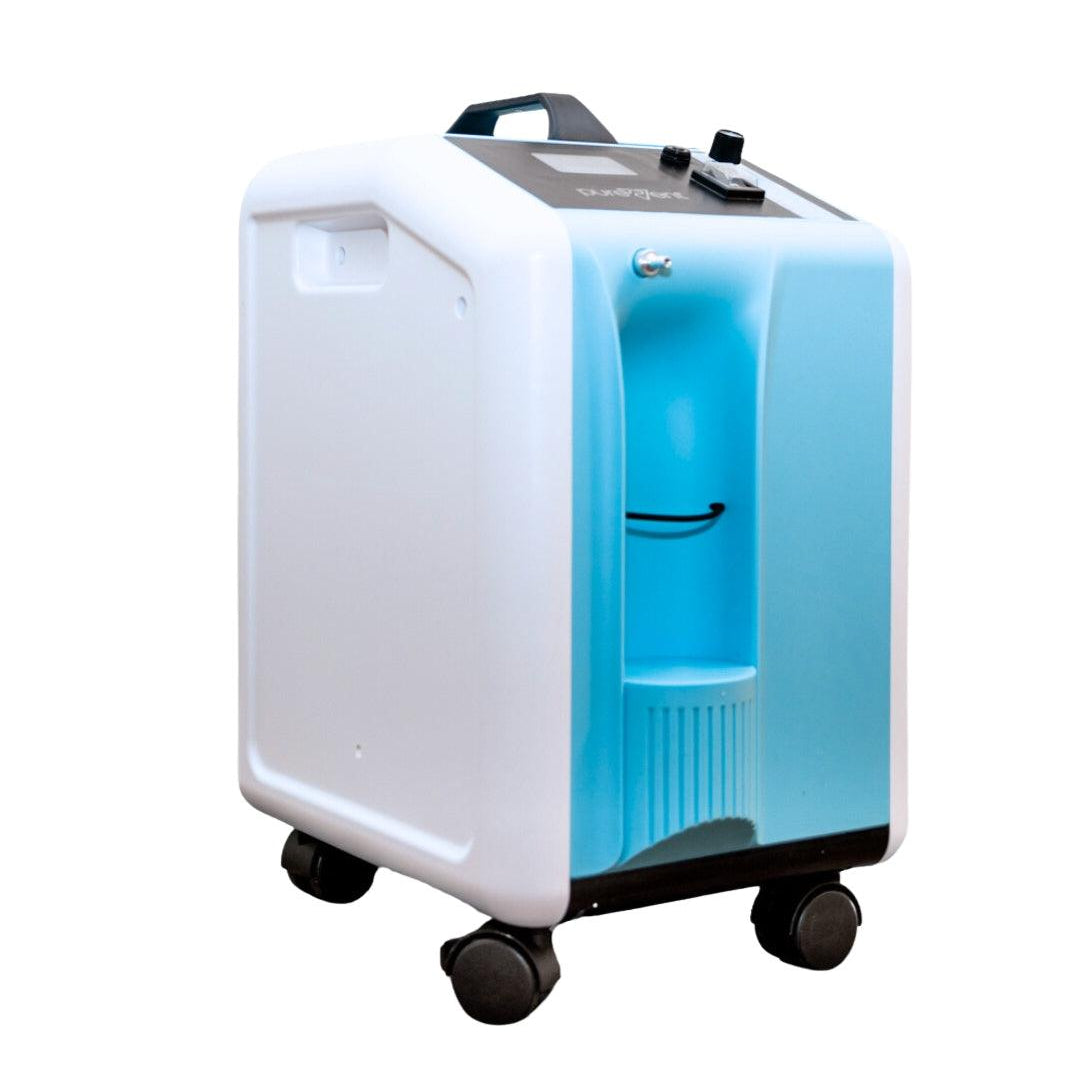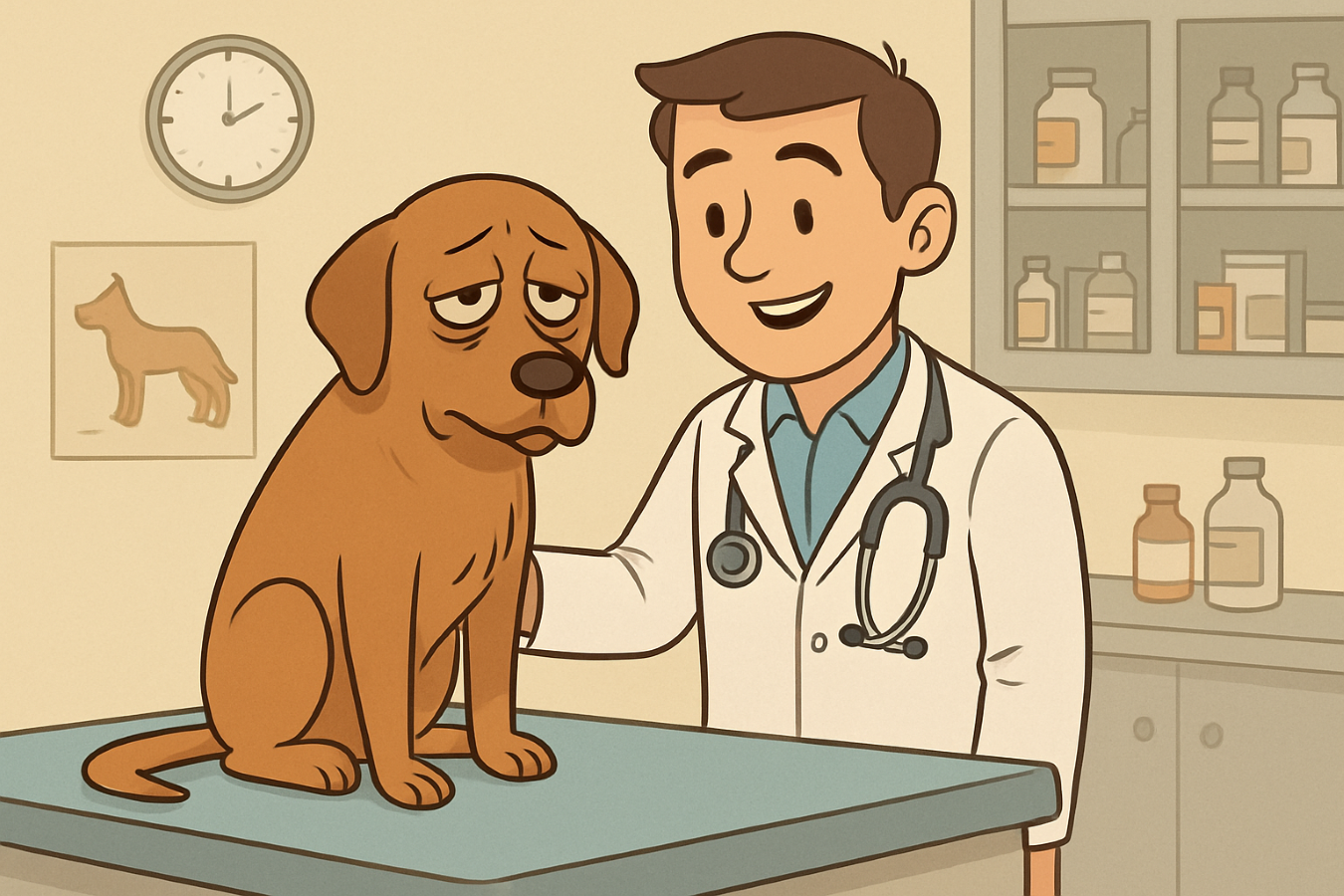Pulmonary hypertension in dogs is a serious and often life-threatening condition characterized by elevated blood pressure within the arteries of the lungs. This disease can lead to severe respiratory distress, heart failure, and can significantly impact a dog's quality of life. Understanding the complexities of pulmonary hypertension and the treatment options available is crucial for pet owners facing this diagnosis.
Among these treatments, oxygen therapy has emerged as a vital supportive measure. This article will explore the role of oxygen therapy in managing pulmonary hypertension in dogs, its benefits, and how it can help improve your dog's comfort and overall well-being.
Table of content
Understanding Pulmonary Hypertension in Dogs
Pulmonary hypertension is a condition where the blood pressure in the arteries of the lungs becomes abnormally high. This increased pressure forces the heart to work harder to pump blood through the lungs, leading to strain on the heart and potentially causing heart failure . In dogs, pulmonary hypertension can significantly impact both the cardiovascular and respiratory systems, leading to a range of serious health issues.
The condition can arise from various underlying causes. Heart disease, particularly left-sided heart failure, is a common culprit, as it increases the pressure in the pulmonary arteries. Lung diseases, such as chronic bronchitis or interstitial lung disease, can also contribute to the development of pulmonary hypertension by causing inflammation and scarring in the lungs.
Additionally, some dogs may have a genetic predisposition to this condition, making them more susceptible to developing it as they age.
Symptoms and Diagnosis of Pulmonary Hypertension in Dogs
Pulmonary hypertension in dogs can manifest in several ways, often mimicking other respiratory or cardiac conditions, making early diagnosis challenging. Common symptoms include difficulty breathing (dyspnea), rapid or labored breathing, fatigue, and exercise intolerance. In more severe cases, dogs may experience fainting (syncope) due to reduced oxygen supply to the brain, or they may exhibit signs of cyanosis, where the gums and tongue take on a bluish tint due to poor oxygenation.
To diagnose pulmonary hypertension , veterinarians rely on a combination of clinical signs and diagnostic tests. An echocardiogram, which uses ultrasound to visualize the heart's structure and function, is one of the most effective tools for detecting elevated pressures in the pulmonary arteries. Chest X-rays may also be used to assess the condition of the lungs and heart, while blood tests can help identify underlying causes or contributing factors, such as infections or inflammatory conditions. In some cases, additional tests like cardiac catheterization may be necessary to directly measure the blood pressure within the pulmonary arteries and confirm the diagnosis.
Understanding the nature of pulmonary hypertension and its impact on your dog is the first step toward exploring effective treatment options, including the potential benefits of oxygen therapy.
How Oxygen Therapy Works for Dogs with Pulmonary Hypertension
Oxygen therapy is a crucial intervention for dogs with pulmonary hypertension, primarily because it helps support their compromised respiratory function. In dogs with pulmonary hypertension, the elevated blood pressure within the lungs makes it difficult for the heart to effectively pump oxygen-rich blood throughout the body. As a result, tissues and organs may not receive adequate oxygen, leading to symptoms such as difficulty breathing, fatigue, and fainting.

Oxygen therapy works by increasing the amount of oxygen available to your dog's bloodstream, thereby alleviating the strain on the heart and improving overall oxygenation of the body. By delivering a higher concentration of oxygen, the therapy helps to reduce the work the heart must do to maintain adequate oxygen levels. This not only helps to ease the symptoms of pulmonary hypertension but also improves your dog’s comfort and quality of life. In some cases, oxygen therapy can also reduce the risk of complications such as fainting or cyanosis, which occur when oxygen levels become dangerously low.
Can I refill my canister after use?
Oxygen canisters cannot be refilled. Please recycle your empty canisters. You can reorder canisters at any time!
What is the shelf life on the oxygen canisters?
We have a two-year shelf life on our oxygen canisters. This shelf life is for the seal on the oxygen canister itself, not the oxygen.
Store canisters in a cool, dry place and if the seal is not tampered with, the oxygen will stay in the canister.
How long does each oxygen canister last?
Pawprint Oxygen Canisters can last up to 30 minutes. How long the canisters last is dependent on the flow rate that you’re using.
The flow rate is the “dosage” of the oxygen drug and determines the rate at which the oxygen gas leaves the canister.
Your Portable Oxygen Kit will include a regulator that is pre-set to the flow rate dictated by the weight range best for your pet. If you did not purchase a kit, and need a regulator, they can be purchased separately.
These are the durations that the canister will last for each of the flow rates:
0.5 Liters per minute: 30 minutes
1.0 Liters per minute: 15 minutes
2.0 Liters per minute: 7.5 minutes
3.0 Liters per minute: 5 minutes
Types of Oxygen Delivery Methods
There are several methods for administering oxygen therapy to dogs, each with its own advantages and disadvantages, depending on the specific needs of the dog and the home environment.
Using A Portable Rescue Oxygen Kit for Pulmonary Hypertension
Portable oxygen canisters are a convenient option for administering oxygen therapy, particularly when mobility is a consideration. These canisters are filled with lightly compressed oxygen and can be easily carried around, allowing for flexible use whether at home or on the go.
Pros: The primary advantage of portable oxygen canisters is their portability, making them ideal for dogs that may need oxygen therapy while traveling or in different locations around the home. They are easy to use and can provide immediate relief during acute episodes of respiratory distress.
Cons: Portable canisters have a limited oxygen supply, meaning they need to be replaced once empty. By themselves, portable oxygen canisters may not be suitable for long-term, continuous oxygen therapy. Your vet may recommend an at-home source of oxygen to be used alongside the canisters, like an oxygen concentrator, if your dog requires frequent oxygen therapy sessions.

Using At-Home Oxygen Concentrators for Pulmonary Hypertension
Oxygen concentrators are devices that filter and concentrate oxygen from the surrounding air, providing a continuous supply of oxygen without the need for replacements or refills.
Pros: The main advantage of oxygen concentrators is their ability to deliver a consistent and reliable supply of oxygen for extended periods. This makes them particularly suitable for dogs with chronic pulmonary hypertension who require regular oxygen therapy sessions. Concentrators also eliminate the need for regular refills like you would need with a large oxygen cylinder, which reduces the overall cost and logistical burden.
Cons: On the downside, oxygen concentrators are not portable like canisters, limiting their use to the home. Additionally, the initial cost of an oxygen concentrator can be higher compared to portable canisters.
Choosing the right oxygen delivery method depends on your dog’s specific condition, lifestyle, and your ability to manage the therapy. Your veterinarian can help guide you in selecting the most appropriate options to ensure your dog receives the best possible care.
Benefits of Oxygen Therapy for Pulmonary Hypertension in Dogs
Oxygen therapy offers significant benefits for dogs suffering from pulmonary hypertension , making it an essential component of their treatment plan. By directly addressing the challenges posed by inadequate oxygen levels, this therapy not only enhances your dog’s physical well-being but also provides much-needed relief from the symptoms associated with this condition. In this section, we will explore the key advantages of oxygen therapy, including its role in improving oxygenation, alleviating symptoms, and supporting other treatments to help dogs with pulmonary hypertension lead more comfortable and fulfilling lives.
Improved Oxygenation
One of the primary benefits of oxygen therapy for dogs with pulmonary hypertension is the enhancement of oxygen levels in the blood. Pulmonary hypertension restricts the efficient flow of blood through the lungs, resulting in insufficient oxygen being transferred into the bloodstream. Supplemental oxygen directly addresses this issue by increasing the concentration of oxygen that the dog inhales, which in turn raises the oxygen saturation in the blood.
Improved oxygenation has a significant impact on a dog’s overall health and energy levels. When tissues and organs receive an adequate supply of oxygen, they can function more efficiently, reducing the strain on the heart and other systems. This can lead to a noticeable improvement in your dog's vitality, allowing them to engage more comfortably in daily activities. Enhanced oxygen levels also help prevent episodes of hypoxia (low oxygen levels), which can be dangerous and contribute to a decline in the dog’s condition.
Symptom Relief
Oxygen therapy plays a crucial role in alleviating the symptoms associated with pulmonary hypertension. Shortness of breath, or dyspnea, is one of the most distressing symptoms for dogs with this condition. By providing supplemental oxygen, the therapy helps to ease the respiratory burden, making it easier for your dog to breathe. This reduction in respiratory effort not only relieves discomfort but also decreases the risk of severe episodes of respiratory distress.
In addition to improving breathing, oxygen therapy can reduce fatigue and enhance your dog's overall comfort. Pulmonary hypertension often leads to chronic exhaustion due to the body’s struggle to maintain adequate oxygen levels. With oxygen therapy, many dogs experience a reduction in fatigue, allowing them to enjoy a better quality of life. The therapy can also help manage other symptoms, such as fainting spells or cyanosis, contributing to a more stable and comfortable condition for your dog.
Supporting Other Treatments
Oxygen therapy is not just a standalone treatment; it can also complement other therapies used to manage pulmonary hypertension in dogs. For example, medications that lower blood pressure in the pulmonary arteries or improve heart function are often part of a comprehensive treatment plan. Oxygen therapy can enhance the effectiveness of these medications by ensuring that the dog’s tissues are better oxygenated, which can improve the overall response to treatment.
Additionally, lifestyle changes, such as weight management and exercise modifications, are important aspects of managing pulmonary hypertension. Oxygen therapy can support these changes by providing your dog with the energy and comfort needed to engage in gentle exercise or maintain a healthy weight. In some cases, oxygen therapy may also help stabilize a dog’s condition, making it easier to manage the disease and potentially slowing its progression.
By improving oxygenation, relieving symptoms, and supporting other treatments, oxygen therapy offers a multifaceted approach to managing pulmonary hypertension in dogs, helping to enhance their overall well-being and quality of life.
When Oxygen Therapy is Recommended for Pulmonary Hypertension
Oxygen therapy is most beneficial in specific situations where a dog’s pulmonary hypertension symptoms become particularly severe or when their oxygen levels drop dangerously low. Acute episodes of respiratory distress, such as sudden difficulty breathing or fainting spells, are clear indicators that oxygen therapy may be needed. During these critical moments, providing supplemental oxygen can help stabilize your dog, reduce the immediate strain on the heart and lungs, and prevent further complications.
Oxygen therapy is also often recommended following periods of exertion, even light activity, which can exacerbate symptoms in dogs with pulmonary hypertension. After a walk or any physical activity, these dogs might experience increased shortness of breath or fatigue due to the added demand on their cardiovascular system. Administering oxygen in these situations can help your dog recover more quickly, prevent distress, and maintain a safer oxygen level in their blood.
In some cases, dogs with more advanced or chronic pulmonary hypertension may benefit from continuous or regular oxygen therapy, especially during sleep or at rest. This ongoing support can help manage the condition more effectively, reducing the frequency and severity of symptoms and improving your dog’s overall comfort.
Veterinary Guidance
While oxygen therapy can be highly beneficial, it is crucial that it is administered under the guidance of a veterinarian. Each dog’s condition is unique, and a personalized treatment plan is essential to ensure that oxygen therapy is used safely and effectively. Your veterinarian will assess the severity of your dog’s pulmonary hypertension, their specific symptoms, and overall health to determine the appropriate timing and dosage of oxygen therapy.
Regular monitoring of your dog’s condition is also vital. Pulmonary hypertension can fluctuate, and the need for oxygen therapy may change over time. Your veterinarian may recommend routine check-ups, during which they can evaluate the effectiveness of the therapy, make necessary adjustments, and ensure that your dog is receiving the best possible care. This ongoing supervision helps to optimize the benefits of oxygen therapy while minimizing potential risks, such as oxygen toxicity or dependency.
By working closely with your veterinarian and carefully monitoring your dog’s condition, you can make informed decisions about when and how to use oxygen therapy to best support your dog’s health and well-being.
Oxygen Therapy: A Vital Addition to Treatment of Pulmonary Hypertension in Dogs
In managing pulmonary hypertension in dogs, oxygen therapy plays a vital role by improving oxygenation, alleviating distressing symptoms, and supporting other treatments. By understanding how and when to use oxygen therapy, pet owners can provide significant relief and enhance their dog's quality of life. This article has highlighted the mechanisms, benefits, and appropriate scenarios for using oxygen therapy, underscoring its importance in the comprehensive care of dogs with this challenging condition.
Ultimately, the success of oxygen therapy and overall treatment depends on close collaboration with your veterinarian. Each dog's needs are unique, and a personalized approach is essential for ensuring the best possible outcomes. By working closely with your veterinarian, you can develop a care plan that not only addresses the symptoms of pulmonary hypertension but also supports your dog’s long-term health and well-being.

